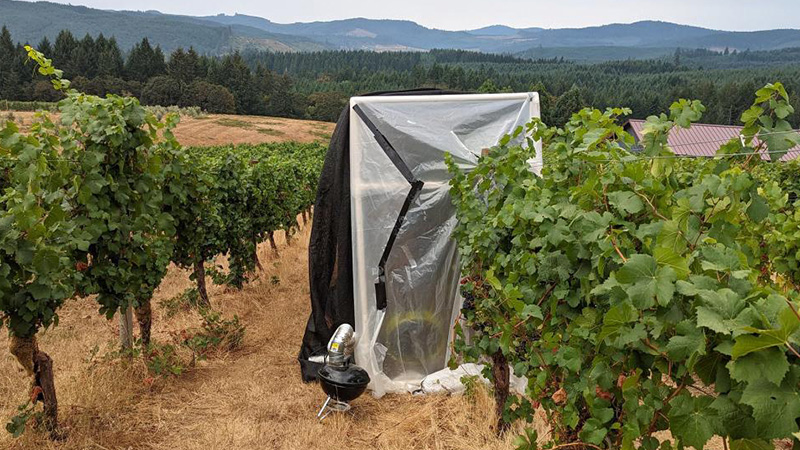West coast wildfires pose a significant threat to some of the nation’s largest wine producers, as their smoke can damage entire harvests. Now, researchers have made a breakthrough discovery that could help winemakers in identifying grapes that have been tainted by smoke.
Researchers at Oregon State University have successfully identified a class of compounds called thiophenols that contribute to smoke taint, according to an April 16 press release. The research team, in partnership with Washington State University, proved that the presence of thiophenols can indicate ruined harvests and smoky-tasting wine.
Thiophenols aren’t naturally present in grapes, but rather are sulfur compounds typically found in meat and fish that taste “meaty” and “burnt.” Researchers once believed that compounds called volatile phenols contributed to the off-aroma and taste of grapes exposed to smoke, but Oregon State assistant professor Elizabeth Tomasino explains that the presence and amount of volatile phenols is often unreliable in predicting the impact of smoke taint.
To confirm the discovery, researchers launched an experiment at the Oregon State vineyard. The group built an enclosure around grapes in a section of the vineyard and then exposed this section to smoke. After harvesting the grapes and creating wine, researchers sent samples to Washington State assistant professor Tom Collins, who identified thiophenols and volatile phenols in the sample exposed to smoke. The control wine (created from grapes in the same vineyard not exposed to smoke) didn’t contain these compounds. A sensory analysis by Oregon State researchers confirmed that the thiophenol-tainted wine tasted “ashy and smoky.”

This groundbreaking research could better assist winemakers in identifying smoke-affected harvests and preventing the release of compromised bottles.
“To date, volatile phenol concentrations and frequent tasting of potentially impacted wines are the only predictors winemakers can use to determine the level of smoke they might have in their wines,” Tomasino explains in the release. “The discovery of thiophenols provides a new chemical marker for smoke taint that could provide a reliable way to identify smoke taint and ways to potentially eliminate it during the winemaking process.”
The study was recently published in the journal Food Chemistry Advances. The project was funded by a $7.65 million grant, which was awarded to Oregon State and other west coast researchers to study smoke taint in grapes.
This story is a part of VP Pro, our free content platform and newsletter for the drinks industry, covering wine, beer, and liquor — and beyond. Sign up for VP Pro now!


